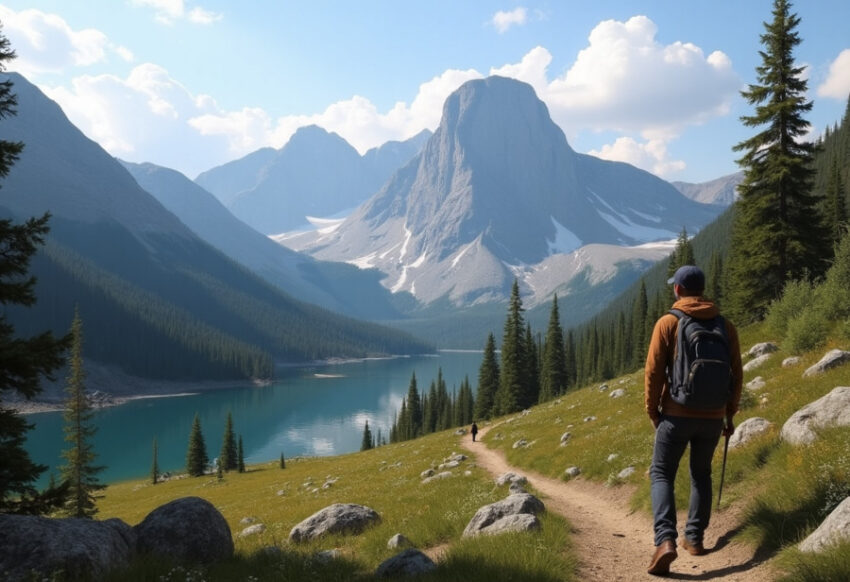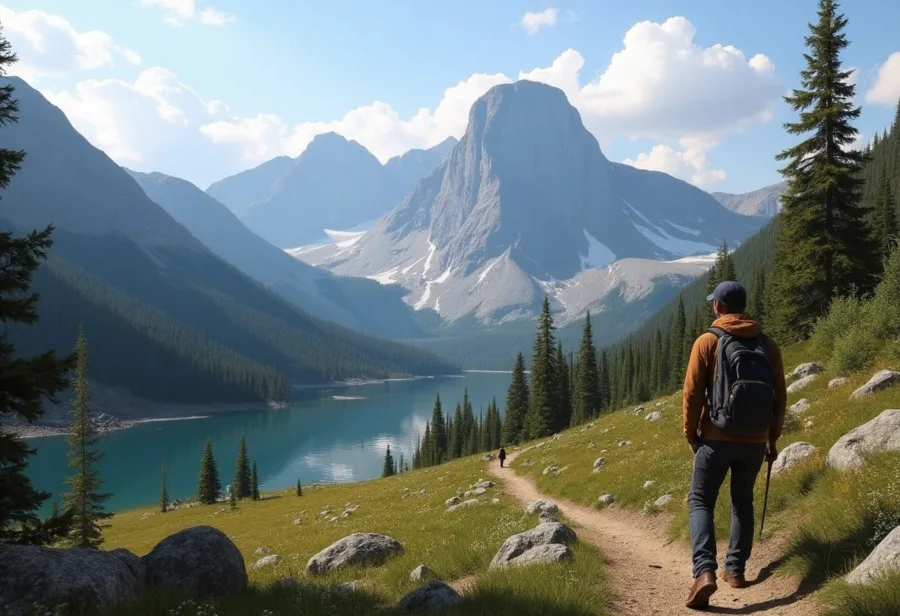Saturday, July 19, 2025

Here in the curve of Montana and Wyoming is one of North America’s loveliest and least-known landscapes: the Absaroka-Beartooth Wilderness. And with a vast swath of glacially carved valleys, granite peaks, alpine meadows and deep forests, it’s also one of the most scenic and wild parts left in the American West. Not remotely as crowded as national parks, this wilderness offers a visceral experience of nature, appealing to solitude-seekers and adventure travelers alike.
Stretching across nearly one million acres, the Absaroka–Beartooth Wilderness is a place where time stands still, development is non-existent, and nature is allowed to thrive without interference. It is one of Montana’s most underrated destinations, delivering raw beauty and isolation that few places can match.
A Wilderness of Scale and Silence
Formally designated in 1978, this wilderness area encompasses around 944,000 acres within the Gallatin, Custer, and Shoshone National Forests. The region is strictly protected to maintain its pristine condition — motorized vehicles, roads, and modern structures are completely absent. Visitors are immersed in a rugged environment dominated by two stunning mountain ranges: the Beartooth Mountains, with their ancient granite formations, and the Absaroka Range, shaped by a long history of volcanic activity.
This area represents a rare opportunity to witness a natural environment almost entirely untouched by human development. Towering summits, secluded lakes, and diverse wildlife are hallmarks of this vast and remote territory.
The Granite Majesty of the Beartooth Mountains
The Beartooth Mountains, part of the Rocky Mountains and the Greater Yellowstone Ecosystem, are home to some of the oldest exposed rocks on the continent. Rising prominently within the range is Granite Peak, Montana’s tallest summit, reaching an elevation of 12,807 feet. Visitors who traverse the Beartooth Highway (US-212) are treated to remarkable high-altitude views of jagged peaks and turquoise alpine lakes.
This granite-rich range holds more than 300 alpine lakes, including scenic highlights like Mystic Lake, Elk Lake, and Pine Creek Lake. These bodies of water reflect the towering cliffs and dramatic skies that surround them, often accessible only by trail. Hiking paths range from moderate routes to challenging backcountry treks, each delivering exceptional views and moments of tranquility.
The Beartooths also host an array of flora and fauna. High-elevation forests of conifers mix with wildflower-filled meadows, while the region’s wilderness supports animals such as bighorn sheep, moose, black bears, and elusive wolverines.
The Volcanic Power of the Absaroka Range
To the south, the Absaroka Range stretches across nearly 150 miles, cutting through Montana and Wyoming. Unlike the Beartooths’ granite structure, the Absarokas are composed of volcanic rock — the remnants of massive eruptions that occurred over 50 million years ago during the Eocene Epoch.
With high ridges, eroded plateaus, and densely forested valleys, the Absarokas offer a contrasting landscape that is both wild and beautiful. Certainly!
Francs Peak, the tallest summit in the range, rises to an elevation of 13,158 feet, standing sentinel over a rugged landscape of secluded trails and ancient glacial formations.
The Absaroka region is less traversed than its northern counterpart but offers equally rewarding scenery for those who venture into its heart. Wildlife is abundant here as well, and the terrain is shaped by centuries of natural forces, from volcanic eruptions to glacial movement.
Frozen Time: Glaciers and Ancient Valleys
Throughout the wilderness, ancient glaciers have carved dramatic valleys, leaving behind rugged ridgelines and alpine basins filled with snow-fed lakes. One of the most unusual features is the Grasshopper Glacier, which contains frozen remnants of past insect migrations — an eerie and fascinating record of natural history preserved in ice.
During spring and summer, the meadows come alive with vibrant hues as blooming wildflowers blanket the landscape in color. The lakes, once locked in snow and ice, shimmer in the sunlight, surrounded by silent pine forests and snow-dusted peaks. Trails lead into remote canyons, open ridges, and panoramic overlooks that feel far removed from the developed world.
Experiences and Outdoor Opportunities
Adventurers venturing into the Absaroka–Beartooth Wilderness will find an expansive range of outdoor experiences, perfectly suited for those seeking authentic, off-the-grid exploration.
Hiking and trekking: Trails range from short scenic hikes to multi-day wilderness routes through deep backcountry.
Camping: Primitive campsites provide the opportunity to stay overnight under vast star-filled skies.
Fishing: Remote lakes and rivers offer excellent trout fishing in clear, cold waters.
Wildlife observation: The region supports a variety of large mammals and bird species in their natural habitats.
Backpacking: Extended journeys through remote alpine terrain allow visitors to experience solitude and raw wilderness.
These experiences are shaped by the land’s rugged character — this is not a polished park but a place where nature leads the way.
When to Go
The ideal time to explore the Absaroka–Beartooth Wilderness is during the summer months, from June through September. During this time, most trails are accessible, wildflowers are in bloom, and the weather is more favorable for high-elevation travel.
Late summer and early fall offer added beauty, with golden foliage painting the slopes and fewer visitors on the trails. Winter access is extremely limited and recommended only for experienced adventurers equipped for harsh alpine conditions.
Despite its enormous scale, the area remains lightly trafficked. With just 300,000 visitors per year, many of its remote corners can be experienced in complete solitude.
Conclusion: A Place Beyond Comparison
The Absaroka-Beartooth Wilderness is one of the last suchpockets of wild america left — raw, rugged country of stark contrasts and unforgettable beauty; silent, resolute land where the written word pales beside the reality and tranquility of nature. It’s said that the park’s peaks are shaped by glaciers, and its lakes are hidden, its valleys wild—true to these studious visitors, who come to escape the noise and find the spirit of nature.
For travelers looking for a place where beauty is unpolished and wild is real, this remarkable region is more than Montana’s best-kept secret — it’s one of the most memorable landscapes in North America.







